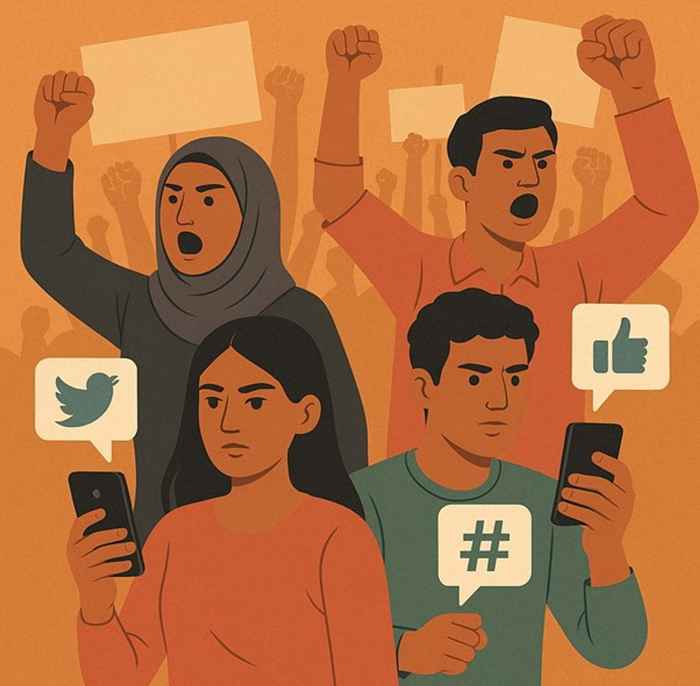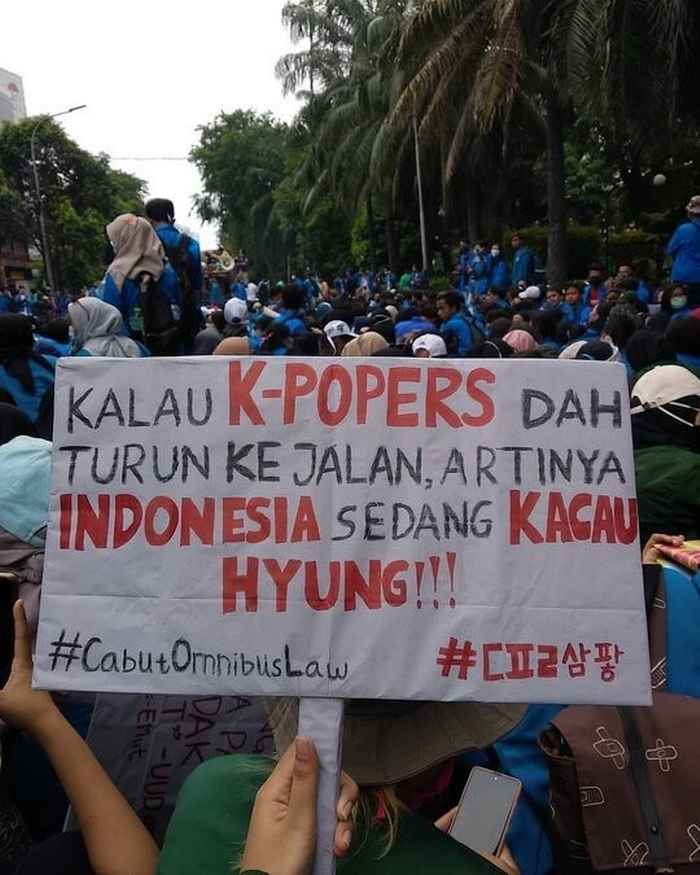The power of online protest
1 October 2025

Online on the streets?
To an outsider, a demonstration in a public square may seem very different from an online protest. Yet, according to Sastramidjaja, street protests and online actions have much in common.
‘Protest is always a public act,’ she explains. ‘In the streets you see people with banners, online it happens in a digital space. The fact that you cannot see the people does not make it any less real.’
How online activism emerged
Sastramidjaja has been studying youth protests in Southeast Asia for years. At first, she focused on demonstrations in the streets, but with the rise of social media, her attention shifted towards digital activism. ‘Protests are increasingly being prepared online. The Arab Spring and the Occupy movement showed the world how social media can strengthen and accelerate protests. Youth movements once again found ways to reach one another.’
From hashtag to mass movement
In many ways, online protest is similar to a physical demonstration: mobilising crowds, expressing emotions collectively, and spreading a political message. Where in the streets you might chant a slogan that is echoed by the crowd, online a hashtag can spread at lightning speed across borders. The velocity and lack of boundaries are key features of online activism.
One advantage of online actions is that everyone can give their own touch to the message. By adding text, an image, or an emoji, the protest feels more personal, which can increase engagement.
K-poppers in action
A successful protest action requires careful preparation. Sastramidjaja explains that activists often choose a specific moment to share a hashtag extensively so it goes viral. It becomes trending topic and reaches a global audience.
‘In the last recent years in Asia, online protests reach specific groups who normally not engage with politics. Take K-pop fans for example, a huge international community of followers of Korean pop bands. Between 2019 and 2022, fans in Thailand and Myanmar embraced activist messages aimed at their governments. These so-called ‘K-poppers’ took on an important role in the protest action.’
Another key factor for success is the use of humor. A meme, a funny image, video or text that spreads quickly online, can help a message gain attention. ‘A meme is most successful when it delivers commentary on an issue in a clever, indirect way.’
Lowering the barrier
Online campaigns can motivate people to join physical demonstrations. In Indonesia and Thailand, hashtags were used to put pressure on political leaders, eventually leading to mass street protests. ‘Joining a protest is a big deal,’ says Sastramidjaja. ‘You could be arrested or face violence. If you also don’t know anyone in the crowd, it can be intimidating. Online protest lowers the barrier to participate in street protests. You can easily connect with others, after meeting them online it’s much less frightening to join that same group in the streets.’
No control
One drawback of online activism is how quickly you can lose control of the protest message. ‘A hashtag campaign can take weeks to prepare,’ says Sastramidjaja. ‘But once the message is online, the creators have no control over it anymore. Anyone on social media can pick it up. The protest can quickly grow and take on a life of its own, sometimes far beyond what the organisers originally intended.’
Spyware
The risks of online protest are also increasing. In countries like Thailand and Indonesia, cyber laws are used to prosecute activists for insulting the government, with prison sentences as a result. ‘Through spyware, invisible software programmes on your phone or computer, governments in Asia monitor your online activities. This form of online repression is much harder to track than police action in the streets,’ Sastramidjaja explains.
Due to this digital repression, Sastramidjaja believes the future of online activism lies beyond the major social media platforms. ‘Activists are increasingly working on alternative platforms so that they can still make their voices heard. Out of sight of strict governments.’
